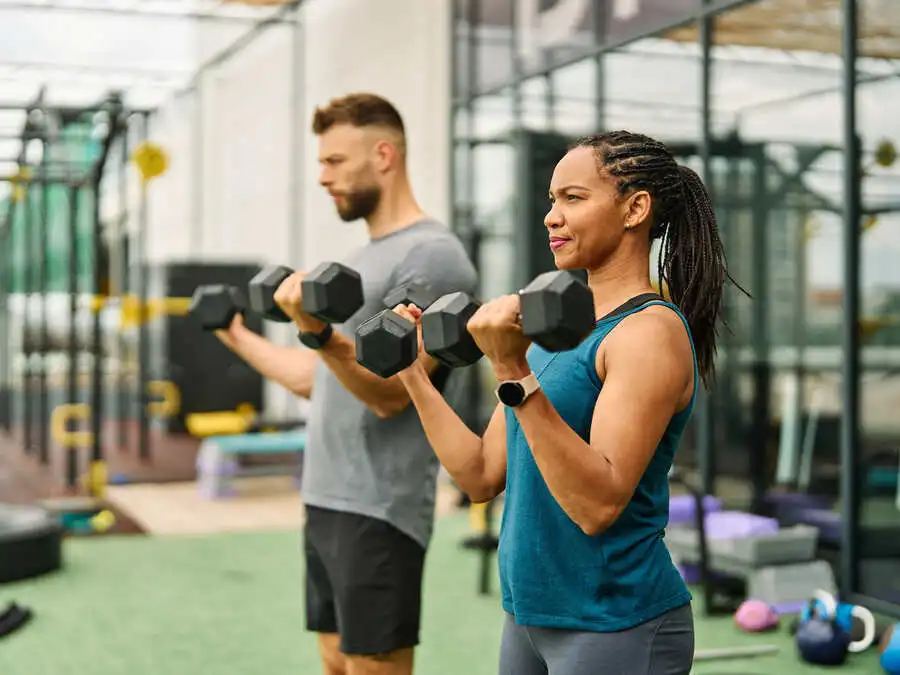Beginning a fitness journey as a beginner can be both exhilarating and inspiring. By following an effective plan, selecting enjoyable activities, and seeking personalized guidance when necessary, beginners can successfully embark on their fitness journey.
People typically associate exercise with hours on a treadmill or sweating themselves to exhaustion, but physical movement comes in various forms: playing sports to simply walking your neighborhood.
1. Know Your Limits
Understanding your limits is the cornerstone of maintaining balance, setting achievable goals and protecting your well-being. Understanding yourself also fosters a healthier approach towards failure and acceptance of imperfection.
Setting specific fitness goals can help structure workouts, keep you on track and motivated, and provide accountability. But setting too ambitious or far-fetched of targets may lead to disappointment and discouragement.
As you set fitness goals, take some time to reflect on which aspects of exercise truly hold meaning for you. Your “why” will serve as motivation when encountering challenges; for instance if running a marathon is on your list, for example the motivation could include feeling more energized, providing role modeling for children or improving your mental wellbeing.
Make your goals measurable, attainable, relevant, and time-based (the SMART method). Beginners could try tracking how many steps they take daily as an indicator for reaching more measurable goals that can be adjusted over time; or set an ambitious goal like increasing reps on certain exercises over time.
2. Set Specific Goals
Fitness goals are an integral component of becoming healthier. Setting realistic and attainable fitness goals will keep you on the path toward fitness success, helping to keep your motivation high as well as serve as a marker for progress over time. In order to be most beneficial on this fitness journey.
Goals must be measurable so you can track their progression over time. This could involve keeping a weekly log of how many sets or blocks were completed or pledged over the previous week – anything to keep track of will help you appreciate all of your successes along the way.
Setting goals that align with your values and interests can also be helpful. For instance, if dancing is something you enjoy doing regularly, setting the goal to attend one new dance class per month might add variety and fun to your workouts as well as help find an inspirational fitness community to join. When exercise becomes enjoyable for you, you are more likely to maintain it long term.
3. Get Moving
Exercise doesn’t need to be dull! Don’t feel limited by having to dedicate hours a day at the gym or be an Olympic athlete; combine movement with something enjoyable like listening to your favorite playlist while exercising on the treadmill or bike, watching a show while walking or swimming or dancing while cleaning house!
Fitness should also be seen as a social experience. Walking your dog with friends, joining an organized bike ride group, or joining an online fitness community like PN can make a significant impactful change to both your attitude and results.
If you’re finding it hard to get going, remember that “no pain, no gain” is outdated and unhealthy for you. To reap maximum benefit from your workouts, listen to your body and push yourself until sweaty or with muscle soreness but not until pain or injury have set in.
4. Make It Fun
Contrary to what exercise advocates might tell you, not everyone needs to become an exercise fanatic who abandons all hobbies for training sessions. That’s okay – focus instead on making physical activity enjoyable for yourself.
One effective strategy to do this is by remembering how much fun you had as a kid playing games such as jumping rope, tag, or skipping. Rekindling that youthful sense of playfulness may make workouts less like chores!
Add challenges or rewards to make your workouts more engaging, whether competing with friends, setting friendly challenges for yourself, exploring new activities and sports, incorporating games, or using virtual reality for an enhanced experience.
Assemble an in-person or virtual community that will make exercise enjoyable. Joining a fitness class, going hiking with a group, or gathering with friends to play sport or dance are all ways you can make exercise more pleasurable. If this proves challenging, try working out with virtual friends through fitness apps instead!
5. Stay Consistent
Consistency is key when it comes to seeing real results from your workout routine, which may prove challenging if results do not manifest immediately. To aid this effort, find ways to track your progress – perhaps keeping a journal or using an app which records workouts and other goals related to fitness and other goals can be effective solutions.
Consider seeking out an accountability partner to hold you responsible and increase the odds that you’ll keep up with your workouts.
One of the primary barriers to consistency lies in adopting an “all or nothing” mindset, in which your fitness journey either all or nothing. To avoid this pitfall, focus on one habit at a time until it becomes part of your regular routine before moving on to something else – this way if a missed workout happens it won’t have become part of your normal life routine!




